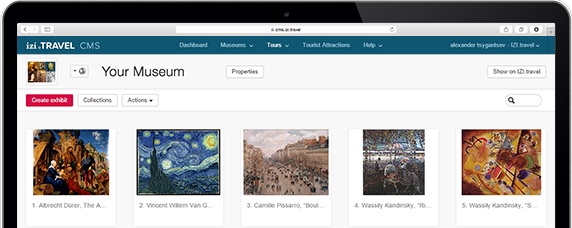La Scala
Update Required To play the media you will need to either update your browser to a recent version or update your Flash plugin.
The Galleria of Victor Emmanuel II connects Duomo Square with La Scala Square (Piazza della Scala). La Scala Square is smaller, and there is a small park in the middle containing a Leonardo da Vinci monument. Behind the park is a plain, neoclassical-style palace. This is one of the world’s most famous opera theatres – La Scala (in Italian: Teatro alla Scala). The theatre was built in the late XVIII century. For more than two hundred years, almost all of the greatest best singers, musicians and dancers have performed on this stage. La Scala is named after the Church of Saint Mary alla Scala (devoted to an Italian noblewoman with this surname). The church was demolished in the XVIII century to be replaced by the opera house. The La Scala Theatre opened in 1778, with the premiere of “Europa riconosciuta” by Antonio Salieri.
In the XIX century, theatre looked quite different from what we see today. Not only were the internal decorations different, but so was the etiquette for spectators during performances. Parterre places did not have any seats and people stood up to watch the opera, even eating and drinking. There was a period when La Scala contained a casino, and it was also possible to bet on horse races, etc. Rich noblemen usually sat in loges, while poorer people sat above them, making loud comments and whistling if they disliked an actor.
The building of La Scala theatre was damaged during the bombardment in 1943, and was restored several times afterwards.
Giuseppe Verdi was one of the most famous composers who made his debut at La Scala. Young Giacomo Puccini and Gaetano Donizetti also presented their operas here. The great conductor, Arturo Toscanini, was an important part of La Scala history and world fame. Stendhal also visited the theatre and mentioned it in his works. Many opera stars have sung at La Scala: Maria Callas, Luciano Pavarotti, Plácido Domingo, Montserrat Caballé, José Carreras, Anna Netrebko and many others. Great Herbert von Karajan, Zubin Mehta and Daniel Barenboim conducted there. Even famous painters like Picasso and Chagall collaborated with La Scala.
La Scala opens its season every year on the 7th of December. This is Saint Ambrose’s Day, Milan’s patron saint. The theatre also houses a museum, which you enter by turning left at the main entrance. The museum contains many instruments, portraits of great musicians, costumes and documents telling the story of La Scala. While visiting the museum, it is possible also to see and listen to rehearsals.
In the XIX century, theatre looked quite different from what we see today. Not only were the internal decorations different, but so was the etiquette for spectators during performances. Parterre places did not have any seats and people stood up to watch the opera, even eating and drinking. There was a period when La Scala contained a casino, and it was also possible to bet on horse races, etc. Rich noblemen usually sat in loges, while poorer people sat above them, making loud comments and whistling if they disliked an actor.
The building of La Scala theatre was damaged during the bombardment in 1943, and was restored several times afterwards.
Giuseppe Verdi was one of the most famous composers who made his debut at La Scala. Young Giacomo Puccini and Gaetano Donizetti also presented their operas here. The great conductor, Arturo Toscanini, was an important part of La Scala history and world fame. Stendhal also visited the theatre and mentioned it in his works. Many opera stars have sung at La Scala: Maria Callas, Luciano Pavarotti, Plácido Domingo, Montserrat Caballé, José Carreras, Anna Netrebko and many others. Great Herbert von Karajan, Zubin Mehta and Daniel Barenboim conducted there. Even famous painters like Picasso and Chagall collaborated with La Scala.
La Scala opens its season every year on the 7th of December. This is Saint Ambrose’s Day, Milan’s patron saint. The theatre also houses a museum, which you enter by turning left at the main entrance. The museum contains many instruments, portraits of great musicians, costumes and documents telling the story of La Scala. While visiting the museum, it is possible also to see and listen to rehearsals.
Scarica l'app gratuita izi.TRAVEL
Crea i tuoi audio tour!
L'uso del sistema e l'app di guida per dispositivi mobili sono gratuiti

